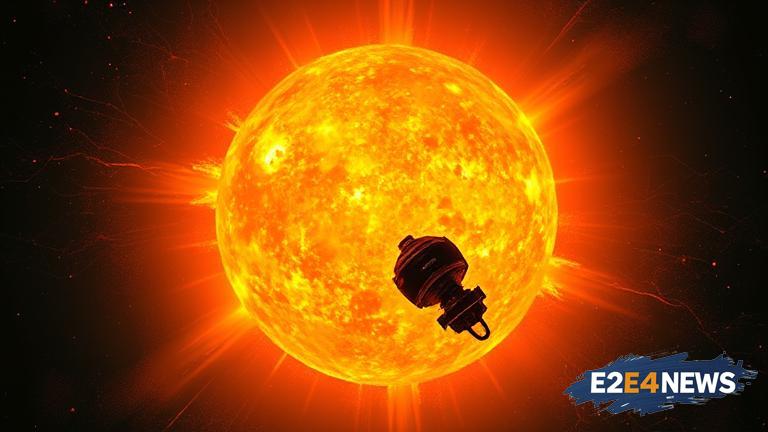The Parker Probe, launched by NASA in 2018, has been on a mission to unravel the mysteries of the Sun’s corona and solar wind. Recently, the probe has made some remarkable discoveries that have shed new light on the Sun’s behavior. The probe’s findings have revealed that the Sun’s solar wind is not a uniform entity, but rather a complex and dynamic system that is influenced by various factors. The solar wind, which is a stream of charged particles emitted by the Sun, plays a crucial role in shaping the solar system and affecting the planets. The Parker Probe’s discoveries have also provided valuable insights into the Sun’s magnetic field and its impact on the solar wind. The probe’s data has shown that the Sun’s magnetic field is much more complex than previously thought, with multiple layers and structures that affect the solar wind. Furthermore, the probe has detected high-energy particles that are accelerated by the Sun’s magnetic field, which has significant implications for our understanding of the Sun’s behavior. The Parker Probe’s findings have also raised new questions about the Sun’s corona, which is the outer atmosphere of the Sun. The corona is much hotter than the Sun’s surface, and the probe’s data has shown that this is due to the presence of magnetic waves that heat up the plasma. The probe’s discoveries have also provided new insights into the Sun’s solar flares and coronal mass ejections, which are massive explosions of energy that can affect the solar system. The Parker Probe’s data has shown that these events are much more complex than previously thought, with multiple stages and processes that are involved. The probe’s findings have also highlighted the importance of continued research into the Sun’s behavior, as it has significant implications for our understanding of the solar system and the potential risks and challenges that it poses. The Parker Probe’s mission has been a groundbreaking success, and its discoveries have paved the way for future research into the Sun and the solar system. The probe’s data has also been used to improve our understanding of space weather, which is the dynamic and variable conditions in the space environment that can affect the solar system. The Parker Probe’s findings have also raised new questions about the potential risks and challenges posed by the Sun’s behavior, such as the impact of solar flares and coronal mass ejections on the Earth’s magnetic field and upper atmosphere. The probe’s discoveries have also highlighted the importance of continued investment in space research and exploration, as it has significant implications for our understanding of the universe and the potential benefits and challenges that it poses. The Parker Probe’s mission has been a testament to human ingenuity and curiosity, and its discoveries have inspired new generations of scientists and engineers to pursue careers in space research and exploration. The probe’s findings have also demonstrated the importance of international cooperation and collaboration in space research, as it has involved scientists and engineers from around the world. The Parker Probe’s discoveries have also raised new questions about the potential for future missions to the Sun and the solar system, such as the possibility of sending a mission to the Sun’s surface or exploring the outer reaches of the solar system. The probe’s findings have also highlighted the importance of continued research into the Sun’s behavior, as it has significant implications for our understanding of the solar system and the potential risks and challenges that it poses. The Parker Probe’s mission has been a groundbreaking success, and its discoveries have paved the way for future research into the Sun and the solar system. The probe’s data has also been used to improve our understanding of the Sun’s corona and solar wind, which has significant implications for our understanding of the solar system and the potential risks and challenges that it poses. The Parker Probe’s findings have also demonstrated the importance of continued investment in space research and exploration, as it has significant implications for our understanding of the universe and the potential benefits and challenges that it poses.
